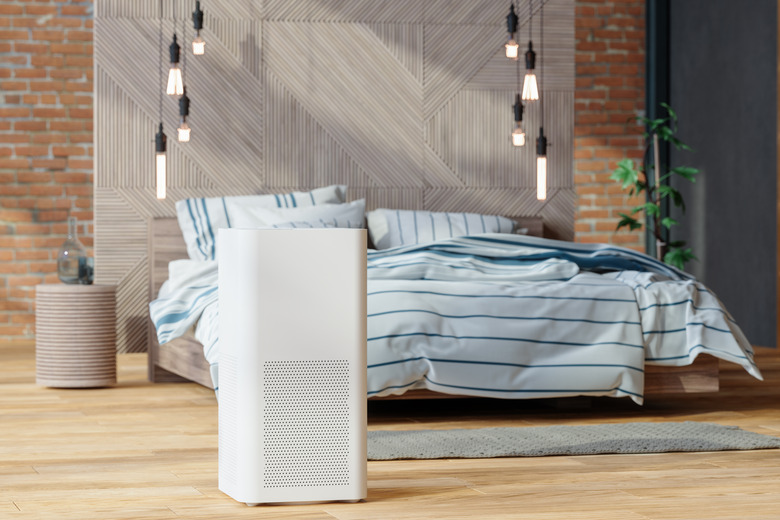What Do I Do If My Room Has A Glue Smell?
The stench of glue is more than an annoying smell, as it can affect your health. Glue, paint, cleaning products and other common household items release volatile organic compounds, or VOCs, into the air. In the case of glue, those VOCs can trigger asthma and other reactions to the toxic fumes. While prevention avoids the VOC issue, if the fumes are already in the air, provide good ventilation to clear the room.
Tip
Good ventilation is key to removing glue smells quickly. Add an air purifier to remove the fumes.
Sources of Glue Smells
Adhesives are used in a multitude of products and home improvement projects. Installing carpets and other flooring products, repairing plumbing with PVC cement or having your nails done all release fumes into the air.
The hydrocarbon toluene (C7 H8) is a major component of many glue products. It is used as a solvent that keeps the glue in a liquid form and then evaporates as the glue dries and releases its sweet-smelling fumes into the air. Mineral spirits and xylene work in the same manner. All of these products can cause short- and long-term health issues, ranging from headaches and dizziness to loss of memory to nervous-system damage.
Removing Glue Smells
Good ventilation can remove glue smells quickly and efficiently. Open all the doors and windows to disburse the fumes.
Opening windows on the windward side of the house allows fresh air to blow through the room. Opening a window on the downwind side releases the fume-filled air from the room. Adding window fans helps pull in fresh air and push the fumes outside. You can also turn on the bathroom and kitchen exhaust fans to help remove fumes quickly.
If any application materials are still in the room, such as used brushes, rollers or rags, remove and dispose of them according to the package directions. Also, don't store the glues in the room. Keep them in the garage or storage shed at the approved temperatures according to the manufacturer. Discard old, outdated glues; the container may begin to release fumes if the glue gets too hot.
Reducing a Glue Smell
Reducing and removing glue smells in closed spaces is essential for reducing indoor air pollution. Add an air purifier to the room to help reduce the VOCs in the air. The best types of air cleaners to remove VOCs are those that use carbon filters to capture the particles and photo electrochemical oxidation units that destroy the VOC molecules using light and a catalytic reaction.
A carbon filter air purifier can remove large amounts of VOC molecules from the air in a short period of time. However, you need to change the filter regularly because once it is saturated, the filter may begin releasing the VOC molecules back into the air.
Alternatively, if the glue smell is isolated to a small, closed space, such as a closet or cabinet, you can remove the source of the smell and then use an absorbing material to reduce the stench. Traditional methods include placing an open box or bucket of baking soda, chemical-free charcoal briquettes or activated charcoal in the space. Change the absorbent material regularly.
Stopping Smells Before They Start
To avoid releasing glue smells into your home, consider working outside or in an open carport or other sheltered area. A well-ventilated area allows the fumes to disperse without stinking up your room. Keep containers closed when not in use to avoid adding more fumes to the air.
Look for low-VOC, VOC-free and water-based products. A low-VOC glue or spray adhesive, water-based glue or even old-fashioned white glue reduces your exposure to toxic fumes. Add a half- or full-mask respirator to further reduce inhalation of the fumes while you work on your craft, art or DIY projects.
References
- Green Facts: Granular Activated Carbon
- Minnesota Department of Health: Volatile Organic Compounds in Your Home
- UCAR Center for Science Education: Volatile Organic Compounds (VOCs)
- Gluegun.com: Low VOC Adhesives – High Performing and Eco-Friendly
- Molekule: Best Air Purifier for Volatile Organic Compounds (VOCs)
- University of Minnesota Particle Calibration Laboratory: Testing of a Photo-Electrochemical (PEC) Air Purifier for Destruction of Volatile Organic Compounds (VOCs)
